Using a hedge trimmer is an easy and quick way to keep your shrubs and hedges looking neat and tidy. Whether you’re a homeowner or professional gardener, knowing how to use a hedge trimmer properly can save you time and energy when trimming your plants. By following the steps below, you will be able to quickly learn how to use a hedge trimmer correctly so that you can maintain beautiful hedges with ease.
Table of Contents
How To Choose A Hedge Trimmer
The first step to using a hedge trimmer is selecting the right one for your particular needs. When choosing a hedge trimmer, you should consider factors such as size, power and weight. For small hedges and shrubs, an electric trimmer with a shorter blade is usually sufficient. If you are dealing with larger bushes or hedges, a gasoline-powered trimmer with a longer blade will be more effective.
Types Of Hedge Trimmers
Hedge trimmers come in two primary forms: electric and gas-powered. Each type offers a distinct set of advantages, so be sure to weigh your needs carefully before deciding which one is right for you.
Electric hedge trimmers are usually the more affordable option and are great for smaller yards. These models tend to have shorter blades and lighter weight motors, which can make them easier to maneuver. However, they require an electrical outlet or battery power, and the limited blade length can make it difficult to trim thick or taller hedges.
Gas-powered hedge trimmers are more powerful than electric models and have longer blades that can cut through thicker branches with ease. They don’t require an electrical outlet or battery power, making them great for larger yards or outdoor spaces. However, they are heavier and more expensive than electric models.
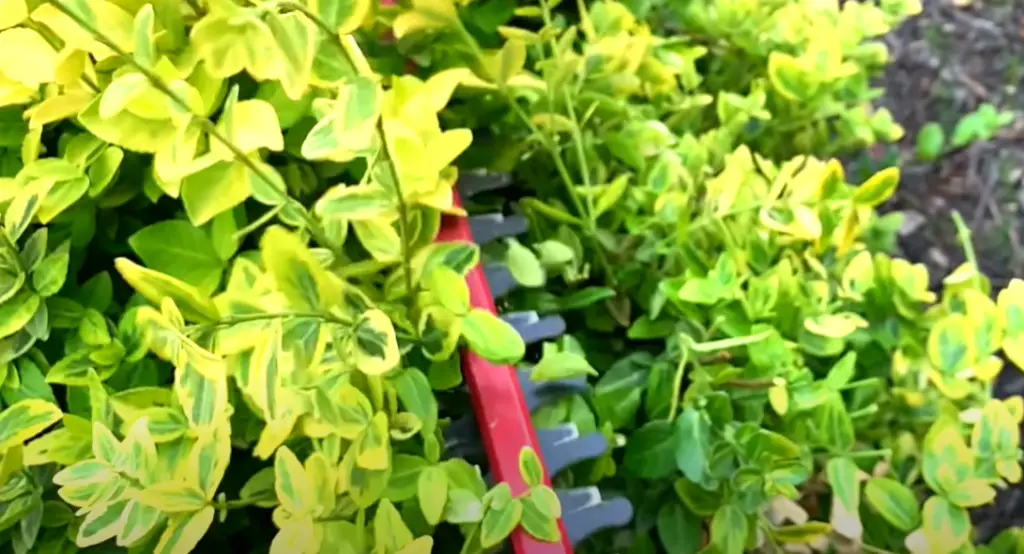
How Often To Use A Hedge Trimmer
One of the most important aspects of hedge trimming is knowing how often to do it. This depends on several factors, including the type of hedge and its growing conditions. Generally speaking, evergreen hedges should be trimmed at least twice a year – once in spring and then again in late summer or early autumn. Deciduous hedges, on the other hand, should be trimmed after they have finished flowering in midsummer.
Other factors to consider include the size of the hedge and whether it is located near a busy street or pathway. Larger hedges may need more frequent trimming, while those near pathways will require more regular maintenance. In both cases, it’s important to make sure that the hedge is trimmed back from any paths or walkways to ensure safety and visibility.
Finally, remember to keep your tools sharp and in good condition, as this will make trimming much easier and more efficient. If you’re unsure of how to sharpen or maintain your trimmer, consult the manufacturer’s instructions for further advice. With these tips in mind, you’ll be able to easily maintain your hedge and keep it looking its best.
How To Use A Hedge Trimmer Safely
As with any gardening tool, it’s important to use your hedge trimmer safely and responsibly.
Check The Surrounding Area And Prepare For Cleanup
Before starting to use your hedge trimmer, always assess the area you will be working in. Make sure there are no obstructions that could get caught in the blades such as rocks, sticks, or branches. When using an electric hedge trimmer, clear away any items that might cause a fire hazard such as dry leaves and twigs.
Wear Personal Protective Equipment
Before starting the hedge trimmer, it is essential to make sure that you are wearing the appropriate personal protective equipment (PPE). This includes safety glasses and gloves, as well as hearing protection. It is important to remember that hedge trimmers can be noisy and wear hearing protectors if necessary. Additionally, ensure that any loose clothing or jewelry is secured before starting the hedge trimmer.
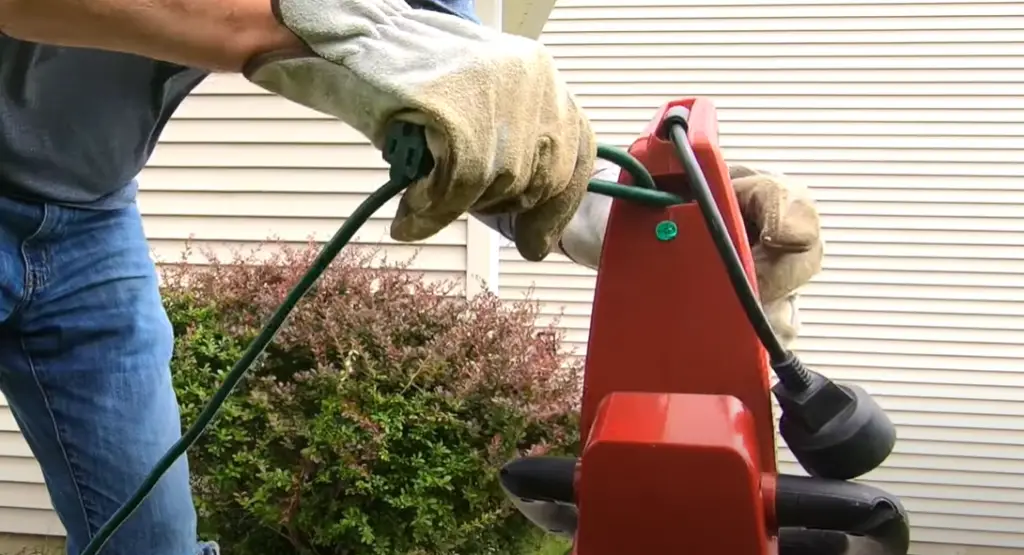
Get To Know Your Hedge Trimmer
Before you can begin to use a hedge trimmer, you’ll need to understand the features and safety considerations of the tool. Hedge trimmers come in petrol, electric and cordless varieties; familiarize yourself with the type that you are using. Different models may have variations in their design, such as two-handed or looped handles for extra control over the blades. Read through your instruction manual so that you know how to use all of the controls safely.
Start Trimming Slowly At The Base
Now that your hedge trimmer is ready to go, it’s time to start trimming. Before you begin, always remember to work slowly as a way of avoiding an uneven cut. Start by cutting off the bottom of the hedge at its base and move upward. To ensure symmetry, be sure to check both sides of the hedge as you go. Don’t forget to take regular breaks; this will help prevent fatigue from setting in and potentially decrease the accuracy of your cuts. Once you have finished with one section, move onto the next and repeat! With patience, your hedges should soon become perfectly manicured works of art!
Clean Up Any Loose Leaves Or Branches
Before you begin cutting with the hedge trimmer, it’s important to clean up any loose leaves or branches that are in the way. This will help keep your hedge trimming neat and orderly. Be sure to check for anything that may be stuck in-between the blades, as this can cause damage to them.
Take Care Of Your Hedge Trimmer
Hedge trimmers can be hazardous pieces of equipment, so it’s important to take safety precautions when using them. Before use, check the blade to make sure that it is clean and sharp. It is advisable to wear gloves and goggles for protection. When operating the trimmer, ensure that you have a firm grip and always keep the blades pointed away from your body. When moving around obstacles or reaching into difficult spots, turn off the engine before repositioning yourself. Keep children and pets away from where you are working as well. If possible, try to trim in an area with good visibility so you can see what you’re doing properly. Make sure that your feet are kept firmly planted on the ground, and never reach out beyond your natural reach. After you finish trimming, clean the hedge trimmer thoroughly with a damp cloth to prevent rust or dirt build-up. Remove any grass clippings or debris from the blades to keep them in optimal condition. Store the hedge trimmer in a dry place to avoid damage from humidity.
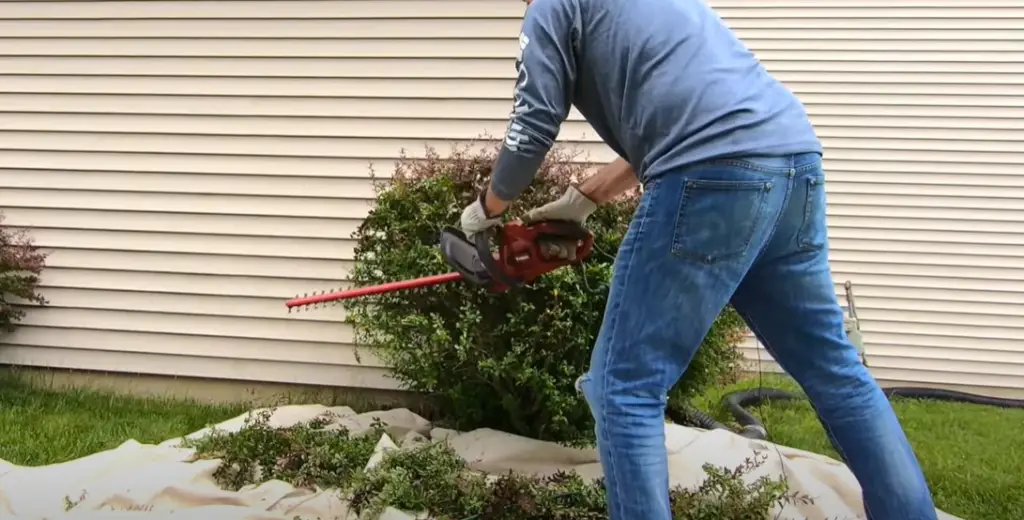
FAQ
How do you properly trim your hedges?
Trimming your hedges properly is essential for keeping them healthy and looking neat. Here are a few tips to make sure you get the job done right:
- Start at the top of the hedge, working inwards towards the center. This will help create a nice, even shape with no overhang on one side.
- Use long, steady strokes when trimming to ensure an even finish. Do not cut too close to the stem as this can damage the plant or cause it to become damaged more easily by pests or disease.
- Make sure your hedge trimmer has sharp blades for clean cuts that won’t tear or shred leaves or branches as you go along. Dull blades will take longer to work, and can cause damage to your plants.
- If the hedge is too tall for comfortable trimming, use a stepladder or high stool to reach the top branches. It’s important to stay safe when using ladders or tools like hedge trimmers, so make sure you follow all safety precautions provided with your equipment.
- When you’re finished trimming, it’s a good idea to give the hedge a light fertilizer treatment if necessary – this will help promote healthy new growth and keep your hedges in top shape!
How do you trim hedges with a trimmer?
Trimming hedges with a trimmer is a relatively simple process that requires careful attention to detail. Before starting, make sure the trimmer is in good working condition and the blades are sharp.
- Begin by creating a guide line to trim along – this can be done using string or rope tied between two stakes at your desired height.
- Place the hedge trimmer on one side of the hedge and begin cutting it down to the guideline, making sure to leave an even edge all around.
- Move across the hedge in straight lines, taking care not to go too far or cut off too much of the foliage at once. Keep moving until you have trimmed the entire bush or shrub.
- Once the hedge has been trimmed, use a flat edged shovel to clean up any foliage that may have fallen on the ground during cutting.
- Finally, use a handheld blower to remove any lingering debris and give your hedge a neat and tidy finish.
Following these steps will ensure you get the best results when trimming hedges with a trimmer.
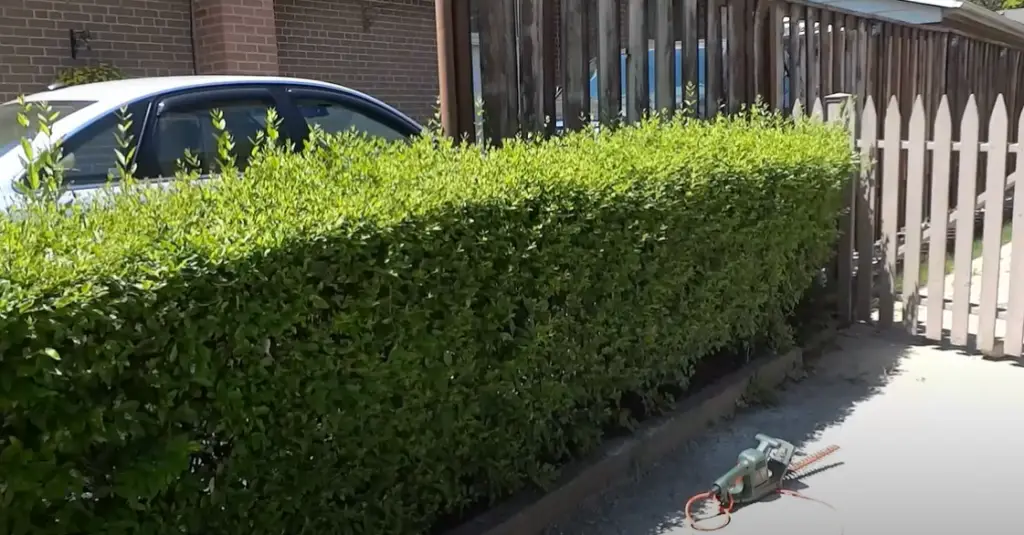
How does a hedge trimmer work?
A hedge trimmer is a lawn tool used to shape and maintain your hedges. It uses two blades, usually one on each end of the shaft, which rotate in opposite directions at high speed. The blades pass by each other without touching, creating a scissor-like effect that cuts through branches and leaves with ease. The operator holds the trimmer’s handle and guides it along the desired shape of the hedge while keeping a steady pressure on the handle. Some models have an additional safety feature which prevents contact between the blades when they pass by each other, ensuring safe use of the tool. Additionally, many modern electric models have adjustable cutting speeds and even multiple blade options for different styles of trimming. With proper maintenance and regular use, a hedge trimmer can keep your hedges looking neat and healthy for years to come.
What is the difference between a hedge trimmer and a hedge cutter?
A hedge trimmer and a hedge cutter are both tools designed to trim hedges and shrubs, but they have some key differences that you should be aware of before deciding which one to use. A hedge trimmer has two blades that move in an alternating motion in order to cut branches as thick as 1/2 inch. It is great for shaping and sculpting existing bushes, as well as maintaining the overall shape of your hedges. A hedge cutter generally has a single blade with teeth or saw-like cutting edges that can cut through branches more than 1/2 inch in diameter. This type of tool is best for forming new hedges or pruning large branches.
How long can you use a hedge trimmer for?
It’s important to use common sense when it comes to how long you can use a hedge trimmer for. Generally, most people will find that they can trim hedges for about an hour at a time without any major problems. If you need to trim your hedges for longer than this, make sure you take frequent breaks and keep yourself hydrated. Prolonged use of the hedge trimmer can lead to fatigue in both your hands and arms which could result in injury if left unchecked. Additionally, if you have issues with back pain or shoulder strain then it’s best not to operate the hedge trimmer for prolonged periods of time. To ensure safety while using the hedge trimmer, always wear protective gloves and safety goggles.
How do you trim a hedge for beginners?
Trimming your own hedge can be a rewarding task, but it’s important to know how to do it correctly. Here are some tips for beginners to get you started:
- Choose the right trimmer: First and foremost, make sure you have the right tool for the job. Hedge trimmers come in both electric and gas-powered models; pick one that best suits your needs, taking into account factors such as noise levels, power output, weight and size.
- Plan ahead: When trimming a hedge, take into consideration its shape before you start cutting away at it. Begin by determining where each side should end or what height you would like the top of your hedge to be. Use this as a guide while trimming.
- Start at the top: To get an even shape, start by trimming the top of your hedge first and then work down each side. Make sure to angle the blades away from you when cutting in order to avoid kickback, which can be dangerous.
- Keep it tidy: As you go along, make sure to remove any clippings from the hedge so that all sides are even and free from debris.
- Be careful: When handling a hedge trimmer, always wear gloves and safety glasses to protect yourself from flying debris or sharp objects that may be hidden in the foliage.
When should you not cut a hedge?
It is important to understand when not to cut a hedge to ensure you do not cause damage or risk injury. You should avoid using a hedge trimmer if the temperature outside is too cold, the blades are damaged, or you have recently used fertilizers and pesticides on the hedge. If your hedge is unusually thick or tangled, it’s best to use a handsaw instead of a trimmer. It is also important to make sure that all power cords are tucked safely away before cutting so that they do not get caught in the blades. Finally, never cut above shoulder height; this can put you at risk of serious injury. Always remember to wear protective gear such as goggles and gloves while using any kind of gardening tool. Furthermore, be aware of your surroundings and avoid trimming near power lines.
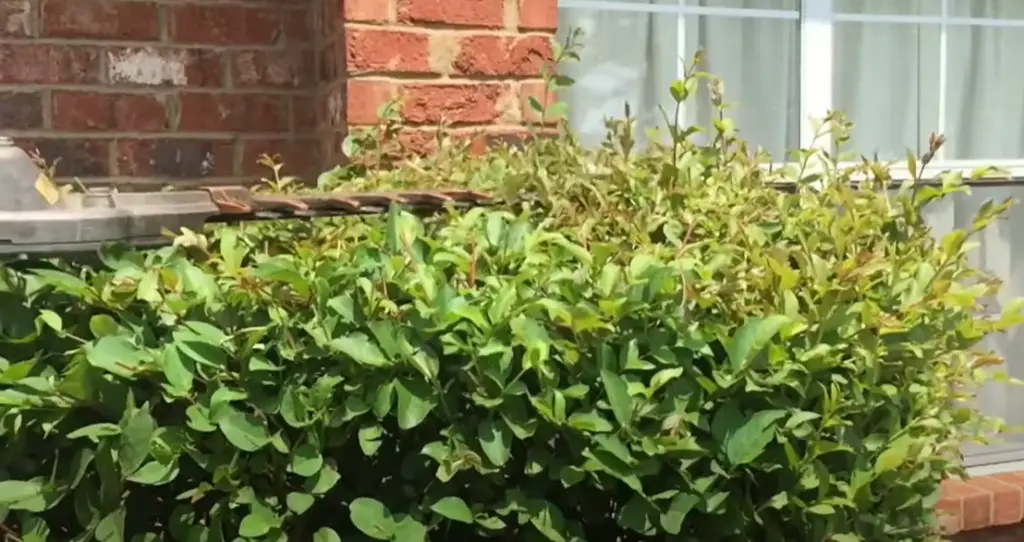
Does trimming a hedge make it grow thicker?
No. Contrary to popular belief, trimming a hedge will not cause it to grow thicker over time. Regular pruning of your hedge can help encourage new growth in the areas where you cut away old branches; however, this is only true when done properly. Pruning too much or cutting at the wrong place can stress the shrub and slow its growth rate. When pruning, always consider the size and shape of your hedge as well as its current health before deciding how much you should trim away. Additionally, be sure to use sharp blades that won’t tear or rip through branches. Dull blades can cause unnecessary damage and create weak points along your hedges that could lead to disease development over time. When pruning correctly, you can expect healthy and even growth in your hedge.
Useful Video: How to Use an Electric Hedge Trimmer to Trim Bushes
Conclusion
It’s important to be aware of the safety guidelines when using a hedge trimmer. Make sure to wear protective clothing and eye protection, and keep your hands away from the blades at all times. Additionally, you should always read through the instruction manual that comes with your hedge trimmer before use, as this will provide you with specific details on how to use and maintain your tool. With regular maintenance and care, you can keep your hedge trimmer in good condition for many years to come.
References:
- https://remingtonpowertools.com/how-to/safely-operate-hedge-trimmer/
- https://lawn.com.au/how-to-use-a-hedge-trimmer/
- https://www.gardeningetc.com/advice/how-to-use-a-hedge-trimmer
- https://www.flymo.com/uk/content/hints-tips/hedge-care/how-to-use-a-hedge-trimmer-top-tips

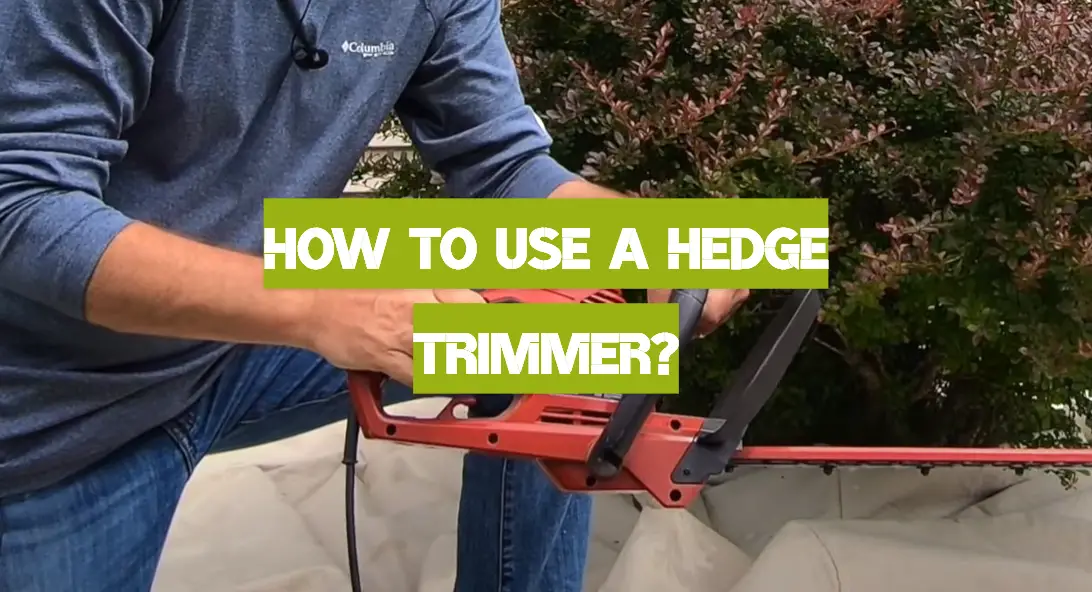





Leave a Reply